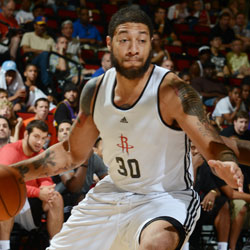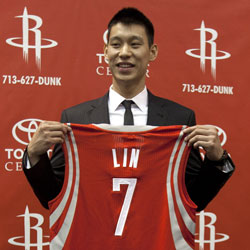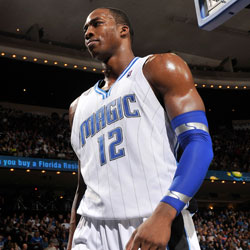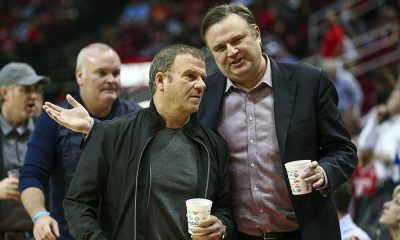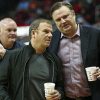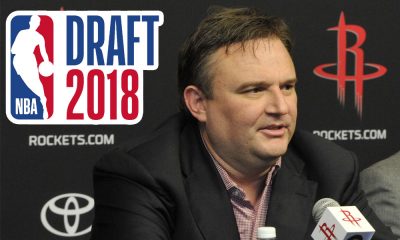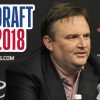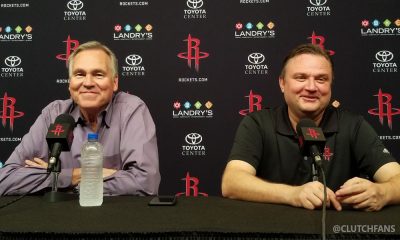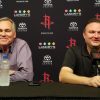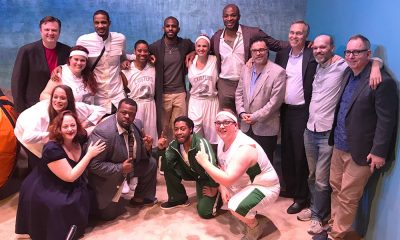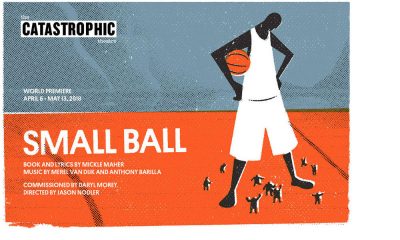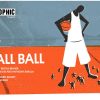Houston Rockets
Houston Rockets Salary Cap Update: “Total Rebuild” Edition
After closing the book on an all-too-brief 2011-12 NBA season and opening up the 2012 offseason with a flurry of activity, let’s take a look at the Houston Rockets’ current salary cap situation.
Published
13 years agoon
After closing the book on an all-too-brief 2011-12 NBA season and opening up the 2012 offseason with a flurry of activity, let’s take a look at the Houston Rockets’ current salary cap situation.
The Rockets’ Latest Moves
Since my last update, the Rockets have made the following roster moves:
- Prior to the end of the season, the Rockets signed Courtney Fortson and Diamon Simpson each to two-year deals for the league minimum, with team options on the second year with a non-guaranteed salary (the options were subsequently picked up).
- On June 26, the team traded Chase Budinger and the draft rights to Lior Eliyahu to the Minnesota Timberwolves in exchange for the #18 pick in the 2012 NBA Draft.
- On June 27, the Rockets traded the #14 pick in the 2012 NBA Draft, Samuel Dalembert, their 2014 second round pick and cash considerations to the Milwaukee Bucks in exchange for the #12 pick in the 2012 NBA Draft, Shaun Livingston, Jon Brockman and Jon Leuer.
- The Rockets selected Jeremy Lamb (#12), Royce White (#16) and Terrence Jones (#18) in the 2012 NBA Draft.
- The team purchased the draft rights to Turkish power forward Furkan Aldemir (the #53 pick in the 2012 NBA Draft) in a four-team trade involving the Los Angeles Clippers, the Dallas Mavericks and the Utah Jazz.
- During the July Moratorium, the team signed Donatas Motiejunas to his first round rookie scale contract at the maximum permitted 120% of his scale salary.
- On July 11, the Rockets traded Kyle Lowry to the Toronto Raptors in exchange for Gary Forbes and a future first rounder that is a likely lottery pick.
- Also on July 11, the team signed and traded Marcus Camby to the New York Knicks in exchange for Toney Douglas, the non-guaraneed contracts of Josh Harrellson and Jerome Jordan, and the Knicks’ second round picks in 2014 and 2015.
- On July 13, the Rockets waived Luis Scola via the amnesty provision, clearing his salary off of the team’s salary cap. (Scola was subsequently claimed off waivers by the Phoenix Suns with a partial claim bid; and the Suns will pay Scola approximately $4.5 million per season for each of the next three years, with the Rockets paying the rest of the $31 million remaining on Scola’s contract. Major credit to Rockets owner Leslie Alexander for his willingness to pay $17.5 million for one of his best players to NOT play for him, all in the name of salary cap flexibility to pursue the opportunities necessary to return the team to championship contention.)
- The Rockets signed Jeremy Lin to a three-year, $25.1 million offer sheet on July 14, which was not matched by the New York Knicks.
- On July 18, the team waived Leuer and Jordan. (Leuer was subsequently claimed off of waivers by the Cleveland Cavaliers.)
- On July 20, the Rockets signed and traded Courtney Lee to the Boston Celtics in exchange for JuJuan Johnson, the non-guaranteed contracts of Sean Williams and E’Twaun Moore, the draft rights to Jon Diebler, and the Charlotte Bobcats’ 2013 second round pick previously acquired by Boston. (Moore was subsequently waived.)
- The team signed Omer Asik to a three-year, $25.1 million offer sheet on July 21, which was not matched by the Chicago Bulls.
Explaining the Lin and Asik Deals
As noted above, Lin and Asik each signed (presumably) identical three-year, $25.1 million offer sheets with the Rockets. Because both players fall within the unique category of high-quality restricted free agents with only one or two years in the league (both are two-year veterans), Lin and Asik were subject to what has become commonly known as the “Gilbert Arenas” provision of the CBA, or the Arenas Rule. (More on the “Gilbert Arenas” provision can be found here).
The Arenas Rule prohibits any team from offering these types of players a starting salary greater than the Non-Taxpayer Mid-Level Exception ($5 million for 2012-13) and only a 4.5% raise in Year 2 of the contract (in this case, $5.225 million). Starting in Year 3, the salary can balloon to up to the applicable maximum player salary. Like with other restricted free agents, the player’s former team has the right to match any offer for the player.
The rationale for these salary limits is that the player’s former team must be allowed at least some avenue by which to potentially match any offer sheet, either via Early Bird rights (which allows a team to pay up to the average player salary for a player coming off a two-year contract or having spend two years with the team) or the Non-Taxpayer Mid-Level Exception (for Non-Bird free agents with only one year with the team). The reason for the ballooning of the salary in Year 3 is that the player’s former team would have obtained full Bird rights on such player by that time and would then be allowed to offer such player a maximum salary.
From a salary cap standpoint, if the team extending the offer sheet wishes to give such a player a raise greater than 4.5% in Year 3 of the offer sheet, it must have at least enough cap room available to cover the average annual salary; and the player will count against the offering team’s salary cap (and for luxury tax purposes) at that average figure in each year of the offer sheet. However, unless the player’s former team has a similar amount of available cap room, it must have the player’s actual salary from year to year count against its salary cap and luxury tax calculations.
For lack of a better term, Rockets GM Daryl Morey and the Houston front office “artfully exploited” the Arenas Rule.
By limiting the Lin and Asik offer sheets to only three years (as opposed to four-year deals), the Rockets were able to concentrate the balloon payment into Year 3, rather than having some of that ballooning salary spread over multiple seasons. The offer sheets will pay Lin and Asik the maximum player salary for five-year veterans (approximately $14.898 million), making it extraordinarily painful for either New York or Chicago (both tax-paying teams) to match. The cap hit for Houston on each player is $8.37 million in each season; but the cap hit to their former teams would be $5 million in 2012-13, $5.225 million in 2013-14 and $14.898 million in 2014-15 (which is the actual payment schedule, even for Houston).
Making matters worse for the Knicks and Bulls, the year in which the massive cap hit for their now-former players would occur (the 2014-15 season) is also the first year in which the league’s most punitive luxury tax — the “repeater tax” — will impact teams that are taxpayers in each of the three prior seasons. Is it any coincidence that both New York and Chicago project as taxpayers in each of those season? I think not.
For those wondering what the salary cap impact would be if the Rockets later decide to trade either Lin or Asik, the receiving team would get the player at the same $8.37 million per year cap hit at which Houston has them. While it is still not completely clear how the actual salary payments would be treated, those would presumably be covered by the receiving team in full. In other words, if the Rockets traded Asik to another team in the summer of 2014, Asik would only count $8.37 million for salary-matching purposes, but his entire $14.898 million salary for 2014-15 would presumably need to be covered by his new team (the Rockets would likely be unable to contribute more than the maximum $3.3 million cash allotment permitted).
Salary Commitments and Potential Cap Room
(DISCLAIMER: Further roster moves will likely be made. The figures below probably do not represent the Rockets’ true cap situation once such additional moves are made; they are solely intended to give you a picture of the Rockets’ current cap situation.)
Barring any further roster moves, the Houston Rockets now have approximately $53.50 million in team salary for the 2012-13 season: Kevin Martin ($12.44 million), Lin ($8.37 million), Asik ($8.37 million), Livingston ($3.5 million, only $1 million of which is guaranteed), Patrick Patterson ($2.10 million), Douglas ($2.07 million), Marcus Morris ($1.91 million), Forbes ($1.5 million), Motiejunas ($1.36 million), Johnson ($1.09 million), Brockman ($1 million), Williams ($915,852, non-guaranteed if waived by August 1), Chandler Parsons ($888,250), Greg Smith ($762,195, of which 50% is guaranteed), Fortson ($762,195, non-guaranteed), Simpson ($762,195, non-guaranteed), Harrellson ($762,195, non-guaranteed if waived by August 15), the rookie scale cap holds for Lamb ($1.68 million), White ($1.37 million) and Jones ($1.24 million), and the cap hit from the Derek Fisher buyout ($644,005; more on that here).
Based on this season’s maximum salary cap of $58.044 million, in order for the Rockets to maintain rights to all of their current players, they will have approximately $4.55 million in salary cap room. If the Rockets simply waive their fully non-guaranteed contracts (Williams, Fortson, Simpson and Harrellson), though, that number jumps to approximately $7.75 million in cap room. In the event that the Rockets decide to waive (and eat the partial guarantees on) Livingston and Smith, that figure could conceivably reach as high as $10.63 million. However, those figures could be reduced slightly (by up to $858,440) if one or more of the 2012 first round picks end up signing contracts with the Rockets for up to the maximum permitted 120% of their rookie scale salaries.
Contrary to the popular belief of the national media, the Rockets still have PLENTY of cap flexibility to pursue free agents and trades — namely, for a certain Orlando Magic center — even after signing both Lin and Asik to lucrative deals.
Potential Superstar Acquisition
Much has been made of the Rockets’ pursuit of Dwight Howard. Houston is currently (and finally!) being recognized by most of the mainstream media as the frontrunners to either land Howard or possibly acquire another piece (like Lakers center Andrew Bynum) as part of a three-team trade with Orlando. The Rockets possess the unique combination of (1) enticingly high draft picks (most notably, the Toronto pick acquired in the Lowry trade), (2) high-ceiling young players (in particular, Lamb, Motiejunas and Parsons) and (3) the cap flexibility — via cap room and/or expiring or non-guaranteed contracts — to take on some additional salary from Orlando in order to clear the Magic’s books for a fresh start post-Howard.
Because the Rockets possess the potential for either/both (A) significant cap room (if they waive all of their non-guaranteed contracts) to absorb incoming Orlando players and/or (B) salary-matching trades financially beneficial to Orlando (if the Rockets instead use expiring or non-guaranteed contracts for salary-matching purposes), there are countless scenarios in which a Howard-to-Houston trade can be accomplished. It is virtually impossible to predict which players, picks and other assets will be included in whatever trade might end up happening. However, in order to illustrate the Rockets’ cap flexibility, I will walk through one hypothetical variation of such a trade.
Let’s say the Rockets trade Martin, Patterson, Lamb, Jones, the Toronto first round pick, the Dallas first round pick and the Charlotte second round pick to Orlando in exchange for Howard ($19.54 million), Jason Richardson ($5.8 million in 2012-13, $6.2 million in 2013-14 and a $6.6 million player option in 2014-15) and Chris Duhon ($3.25 million in 2012-13 and $3.5 million in 2013-14, only $1.5 million of which is guaranteed if waived on or prior to June 30, 2013).
(NOTE: This does not in any way reflect what I think will or should happen and yes, I know that’s a lot to give up for that Orlando package. All the more reason to use this as the hypothetical.)
By waiving all of their non-guaranteed contracts, the Rockets can create sufficient cap room to absorb the salaries for Richardson and Duhon, while sending Orlando back only draft picks and the draft rights to Lamb and Jones. Then, with the Rockets largely capped out by that first component trade, they could then ship Martin and Patterson to Orlando for Howard. (FYI, the Martin-Patterson combination comes out to virtually the absolute least salary an over-the-cap team could trade to get back Howard’s contract.)
Different variations of a Howard trade (including the hypothetical above) will likely generate various trade exceptions to Houston and/or Orlando; and some scenarios could be conceived to potentially create a very large trade exception. Do not be surprised if a final Howard trade configuration has the result of generating a huge trade exception for Orlando. Magic GM Rob Hennigan is creative enough to structure it that way.
Other Trade Options
The pursuit of a mega-trade for a star player is not the only use to which the Rockets can put their cap room. By being under the salary cap, so long as the Rockets do not exceed the maximum salary cap by more than $100,000 upon completion of a particular trade, the team would not be subject to either salary matching rules or the 60-day waiting period to aggregate salaries of players acquired in prior trades. In other words, if the Rockets are $10 million below the cap, (1) they can trade a $2 million player in exchange for another team’s player making up to $12.1 million or (2) they can aggregate the salaries of Douglas ($2.07 million, recently acquired from New York), Johnson ($1.09 million, recently acquired from Boston) and Brockman ($1 million, recently acquired from Milwaukee) in exchange for another team’s player making up to $14.2 million.
If the Rockets cannot find another player — either via free agency or trade — who is worth pursuing or is willing to sign with/come to Houston, then having available cap room can benefit the team in other ways. For instance, the Rockets can help facilitate trades between two or more other teams that might not otherwise be able to complete their trade without use of the Rockets’ cap room. In exchange for facilitating a trade, the Rockets would receive some consideration, be it cash, picks or players.
Also, they could just sit on their cap room and wait for a team to get desperate enough to trade them something for the privilege of using that room. Oklahoma City used this strategy a few years ago with Utah (then fearful of paying the luxury tax), which coughed up talented young point guard Eric Maynor in exchange for the Thunder taking on the remaining few months of Matt Harpring’s contract (which itself was largely covered by insurance).
Believe it or not, the Rockets actually have assets other than cap room that they can use in trades this summer. Patterson, Morris, Parsons, Motiejunas, Lamb, White and Jones all have some decent trade value as young prospects. The Toronto pick is extraordinarly valuable. The future Dallas first rounder is another nice asset, as is the Charlotte second rounder. The Rockets hold the draft rights to at least two players — All-Euroleague point guard Sergio Llull and the aforementioned Aldemir — who may interest teams now or in the future.
Martin will have a $12.44 million expiring contract while still being a very productive offensive player. Those anxious to “dump” Martin at the first chance, please note that Martin’s expiring contract may be more valuable in trades than $12.44 million in additional cap space. The Rockets can take back up to $17-18 million in incoming salary in exchange for Martin’s outgoing salary.
Conclusion
I know there is a great feeling of disappointment by many fans after the Rockets ended the 2012 NBA Draft without a superstar or a top-5 pick. Fortunately, the stellar play of the team’s rookies in the NBA Summer League in Las Vegas last week, together with all the rumored Howard trade talk, has seemingly caused such disappointment to dissipate.
Meanwhile, the Rockets have set themselves up nicely to make a run at a major acquisition in the coming months, either via free agency or trade, by positioning themselves as one of few NBA teams with both cap room and a slew of tradeable assets. They have compiled so many assets in the past 2-3 years that they can afford to “overpay” for a talent upgrade if necessary. Or they can make some moves for the future while still preserving salary cap flexibility for 2013 (when the Rockets, with their current roster, could conceivably have as much as $27 to 32 million in cap room!) and beyond, adding even more flexibility to trade other parts going forward in their pursuit of a star acquisition.
It’s only fitting that Morey is on his way to the Summer Games in London. He, with significant help from Mr. Alexander and the rest of the Houston front office, has given the Rockets the flexibility of an Olympic gymnast.
>> Comments
Houston Rockets
Looking Back on the Trade for Phoenix’s Draft Picks
Are the Rockets set to cash in on Phoenix’s downfall or could a Suns retool murky the waters?
Published
1 month agoon
March 12, 2025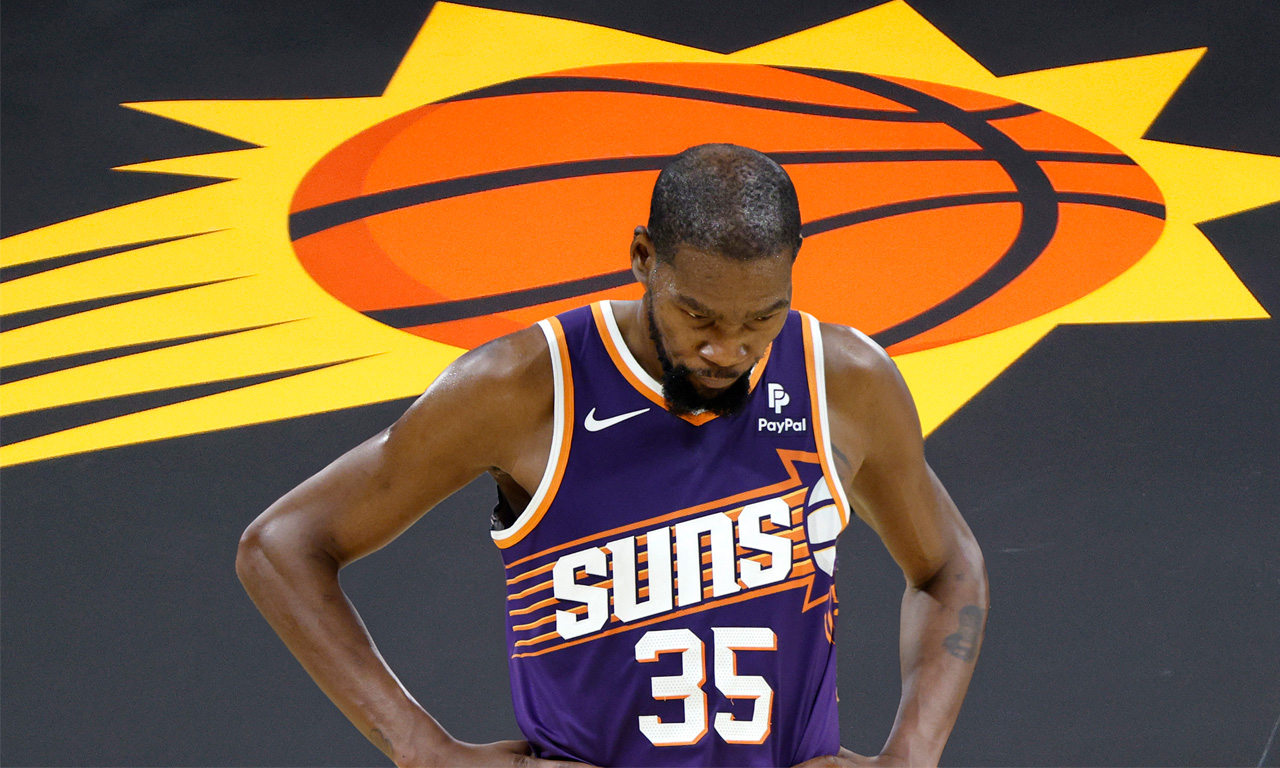
As the Houston Rockets set to host the Phoenix Suns tonight, it seems the right time to take a look back at the trade that linked these two franchises together for the foreseeable future.
This past June, the Rockets made a trade with Brooklyn that sent back to the Nets control of their 2025 and 2026 unprotected first-round picks. In exchange, the Rockets received a large chunk of Phoenix’s future (2025, 2027, 2029) and control of the Dallas Mavericks’ 2029 first.
In essence, the Rockets traded one pick and one swap for two picks and two swaps. All unprotected.
Thoughts At The Time of the Trade
If I’m going to discuss the current outlook of this trade, I have to be honest about how I saw it at the time of the move. While I didn’t hate this trade initially, I definitely didn’t love it either.
I liked that the Rockets increased their overall trade assets. I also liked that they extended the timeline to be able to make a bigger trade and I also appreciated that they kept control of the 2027 Brooklyn swap.
But I didn’t like that the Rockets gave up what seemed like the more established value (Brooklyn) for a more uncertain gamble (Phoenix). The Rockets did not control a “tanking runway” of picks to offer back to Phoenix — all of the picks Houston got in the deal were in staggered years (’25, ’27, ’29). I also felt Brooklyn, who badly needed to rebuild, got away with paying market value to get their picks back despite the fact that the Rockets invested years in watching those picks appreciate up to the point that they had the Nets completely over a barrel.
Net-net: I felt like more certainty was traded for less certainty and it was more of an equitable trade for both teams rather than Brooklyn paying dearly to get back the things only the Rockets could offer.
There were two ways I thought this trade could pay dividends: The Suns needed to flame out immediately, as in this season (unlikely), or the Rockets could trade all those pick assets as part of a deal for a real superstar in the next 12-18 months (more likely).
In a testament to how quickly change can occur in a very unpredictable NBA, four things have happened that have been positive indicators for the Rockets in making this move.
The Suns are fading
While Phoenix had major salary cap issues, dealing with the second apron, they didn’t appear to have problems on the court. They jumped out of the gate 8-1 and looked like a legitimate contender behind their star trio of scorers in Kevin Durant, Devin Booker and Bradley Beal.
Given Houston controlled Phoenix’s pick this year via a swap, it looked like the Rockets would come up empty-handed on the trade this season.
That changed quickly.
Injuries, serious depth concerns and a lack of a defensive identity has sent Phoenix spiraling. Booker’s availability has been inconsistent, forcing Durant to carry the load, while Beal has not quite fit in at all. Their financial limitations, thanks to owner Mat Ishbia’s all-in spending spree, have handcuffed their ability to improve the roster around the three stars.
The Suns are sitting 11th in the West, having gone 22-34 since that hot start, and are currently trying to catch a depleted Dallas squad to get back into the play-in picture.
As of right now, the Rockets project to end up with a lottery pick (albeit a late one) this season out of the trade.
Phoenix was caught shopping Durant
Because the Suns struggled so hard after the start, they tried to make a major move at the deadline but could not unload Beal, in large part due to his no-trade clause.
As a result, they may have made a misstep: They openly tried to trade Durant, which inevitably became public news.
Now? Durant will almost assuredly be traded this summer — likely to a destination that he handpicks. This means the Phoenix Suns will have to look at all possibilities for their future, including potentially having to give Rafael Stone and the Rockets front office a call.
But keep in mind, the Rockets can not offer Phoenix the ability to completely rebuild via the draft right now. Phoenix’s 2026 pick is controlled by Washington. They would have to get extremely creative to set that stage. A retool in Phoenix is much more likely.
Could Brooklyn have been better than expected?
This one is tougher to gauge.
The Brooklyn Nets are currently tied for fifth-worst team in the league, giving them strong lottery odds this summer. This was expected. After all, the Nets, even with a healthy Mikal Bridges and a full roster, were not a good team last season, closing the year 20-41 in the final three quarters of the season. The Rockets ended up with the #3 pick (Reed Sheppard) as a result of Brooklyn’s mediocrity.
However, if the Rockets had not placed that pick back in Brooklyn’s hands, would the Nets be better than this?
Brooklyn brought in a new coach in Jordi Fernandez that has had a positive impact. They have dumped off players, such as Dennis Schroeder and Dorian Finney-Smith, that impacted winning. The bar to make the play-in in the East (.415 winning percentage) is obscenely low, with Brooklyn being just five wins away from it at the moment.
And on top of that, Brooklyn did have lots of draft capital that they could have moved to try to win now.
It’s very tough to say as you don’t know if a team with Bridges still in Brooklyn might have actually been worse than this current squad, but you could make a case that the pick the Rockets would have ended up with from Brooklyn this season would be eerily similar to the one they will end up getting from Phoenix this year.
Again, this is a tough call.
Nico Harrison Hooked the Rockets Up
As part of the trade, the Rockets got control of the Dallas Mavericks’ 2029 first-round pick (unprotected, of course). While there’s really no way of knowing what a pick will be five years out, we did know that Luka Doncic would be just 29-30 years old that season and it was fairly etched in stone that he would be the core piece of a Dallas squad that season.
Enter chaos in Dallas.
Doncic was shipped out in the trade that shocked the world, which could have a major impact on the Rockets. Dallas’ current core of Kyrie Irving and Anthony Davis will be 37 and 36 years old that season, respectively.
On paper, the value of that pick shot up.
Final Summary
Right now, the outlook on these picks looks strong. One source stated off the record that they feel the 2029 Phoenix pick is the best pick asset out there that is owned by another team. The Rockets would be reluctant to add that one specifically into any trade unless it’s for a truly legitimate star.
But if there is any lesson that the NBA teaches us over and over again, it’s that it’s very hard to predict where a team will be a year from now, much less three years from now.
Can the Rockets pressure Phoenix and leverage the ownership they have of their draft capital to get what they really want (Booker) from them? Could a Suns retool around Booker and Beal, with the right pieces and assets acquired from a Durant trade, significantly change their on-court outlook and cap sheet — which in turn could damage the value of the picks Houston controls?
Bottom line is it has worked out well this season, and the future forecast at the moment is promising. The current value of those future picks appears strong. What will likely determine history’s final grade for this trade will be how it sets them up for the trade to come, and that’s where fans will be looking to Stone and the front office for action starting this summer.
Houston Rockets
Amen Thompson’s ankle injury will be re-evaluated in one week
“The things he does you can’t replicate,” says Rockets coach Ime Udoka
Published
2 months agoon
March 10, 2025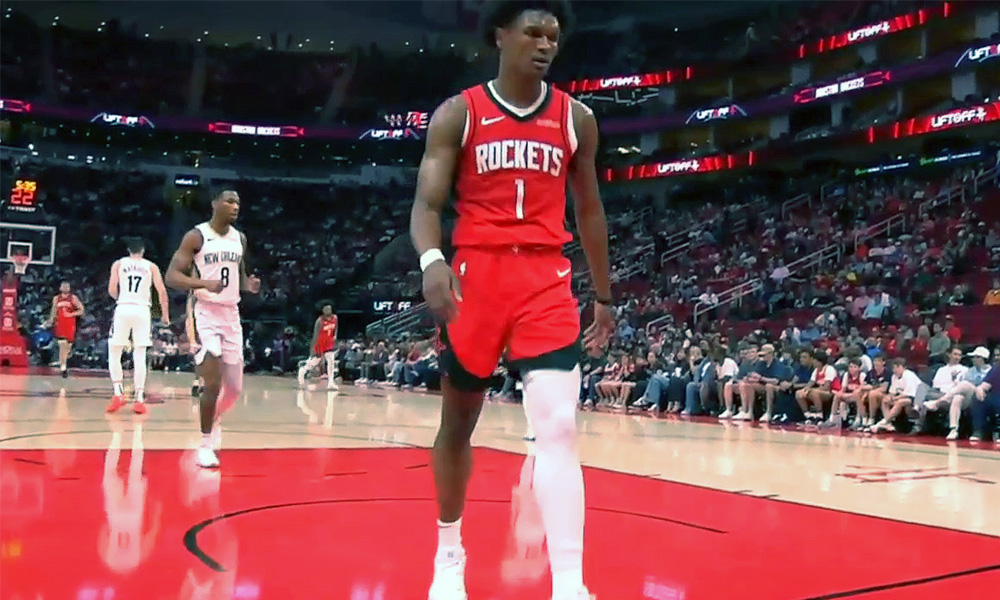
Rockets young star Amen Thompson will have his ankle injury re-evaluated in one week, according to Ime Udoka.
Thompson had an MRI on Sunday and the Rockets coach confirmed all imaging (X-ray, MRI) was negative.
“Just some swelling and pain, obviously,” said Udoka.
If you listen to Udoka, you can tell he knows how special Amen is to this team. He said the Rockets are missing a lot by not having him out there.
“Obviously, the things he does you can’t replicate,” said Udoka. “[Amen is] a guy that plays every position for us. When one goes down, he runs the point. If another is out, he runs the four.”
Amen is one of the best defensive players in the game, and as a one-on-one defender of guards/wings, he might already be the best in the league in just his second season. He’s holding his opponents to 40.5% shooting from the field, tops in the league.
“He’s a very unique defensive player,” said Udoka. “We got some guys that do some great things there, but I like to put him and Dillon on the best two usually, night to night. You got Tari and that’s a luxury as well, but the way he goes about it is different. His athleticism, size, speed, strength, shotblocking ability, steals… he’s all over the place.”
“Hard to replicate for sure.”
Amen injured his ankle late Saturday night in a blowout win against the Pelicans, but the unfortunate part was he probably should not have been on the floor in the first place.
The Rockets left Amen Thompson in the game in a blowout to get one more rebound for a triple-double and he just got injured. He's heading to the locker room with a limp. https://t.co/UBtrEpgWuU pic.twitter.com/D8GeKP8sQk
— ClutchFans (@clutchfans) March 9, 2025
The Rockets had built well over a 30-point lead by early fourth quarter. Jalen Green was able to rest the entire fourth. Alperen Sengun came out of the game with 7-8 minutes left while Dillon Brooks and Tari Eason came out with 6:00 left. But Thompson, who had posted an insane +39 on-off number, remained in the game because he was one rebound shy of a triple-double with 15 points, 11 assists and nine rebounds.
Udoka addressed that decision on Monday before the game against Orlando.
“What I typically don’t do is wholesale substitutions,” said Udoka of the decision to keep Amen in the game. “Albeit 30[-point lead] at six minutes [left] is different than losing to Minnesota, a 16-point lead with four minutes [left].”
“I’ve seen it go both ways in the past. You take out guys too early and have to bring starters back, and vice versa.”
Thompson has played in 60 games this season, five short of being eligible for postseason awards. He absolutely should be up for an All-Defensive nod this season so keep an eye on him getting back in time for that. He would need to return to action no later than April 4th for the game against the OKC Thunder in order to play enough games to be eligible.
Houston Rockets
How the Kyrie Irving Injury Impacts Rockets
Houston’s draft positioning and offseason plans could be impacted by Dallas
Published
2 months agoon
March 4, 2025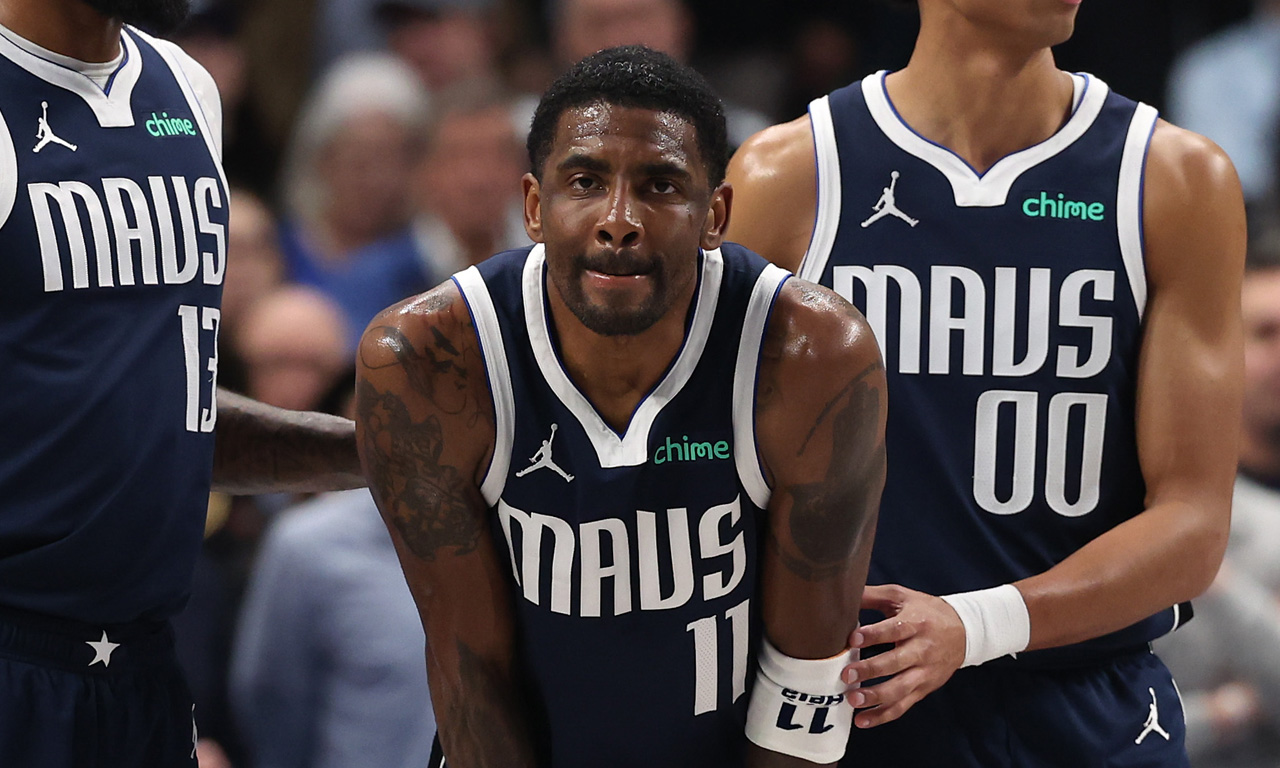
Dallas Mavericks guard Kyrie Irving was injured Monday night and the news dropped on Tuesday that the knee injury is serious — a torn ACL in his left knee that will end his season and a good portion of next season as well.
Brutal. I can’t think of an NBA team that imploded faster than the Dallas Mavericks.
You trade away a 25-year-old phenom who just hoisted you on his back en route to the NBA Finals a year ago. You cashed in that golden ticket to go all-in on a trio of aging stars in Kyrie, Anthony Davis, and Klay Thompson.
Bold strategy, Nico. Let’s see if it pays off.
(Narrator: It’s not paying off.)
The Mavericks had some interesting potential this year and maybe the next couple of years once everyone was healthy, but now? Their star guard is likely out until the calendar year 2026 and Klay and AD aren’t getting any younger nor more durable. The Mavericks may have actually swapped their future for a present that never arrives — and Dallas GM Nico Harrison has to be feeling overwhelming pressure right now.
So how does this impact the Rockets?
For starters, Houston has a game remaining on the schedule against Dallas on March 14th at Toyota Center — Davis may or may not be back for that game.
More importantly, Dallas is the 10th seed in the West at the moment, just 3.5 games ahead of the Phoenix Suns (11th seed). The Rockets control Phoenix’s first-round pick unprotected this season via a swap. We need as many West teams as possible ahead of Phoenix to keep them out of the play-in/playoffs and to push them as deep into the lotto as possible.
This complicates that. Phoenix’s remaining schedule is the toughest in the NBA by a good margin, with plenty of games left against the league’s best teams, so it still looks promising overall — but we’re talking about Kevin Durant, Devin Booker and Bradley Beal. They can still get hot at the right time while Dallas may struggle.
So keep a close eye on that. The good news is the Portland Trail Blazers are one of the hottest teams in the league and they are (shockingly) nipping at the Arizona squad’s heels.
Taking a look ahead to the offseason, the Kevin Durant Pursuit will be big.
This one is a little more complicated for Houston. The Rockets really want Devin Booker but, as of now, the Phoenix plan appears to be to trade KD this offseason and retool around Booker. The Rockets will have interest in Durant but they’re not going to sell the farm (prospects and all the picks) for a 37-year old like they would for Booker.
Three teams that I’ve heard a lot about from Rockets circles that will be in the mix are Houston, Minnesota and Dallas — Timberwolves and Mavericks have been considered the main competition. But, a lot of this will depend on Durant himself and where he wants to play at this stage of his career.
Keep in mind also, if the Suns are “retooling” around Booker and Beal (holding the no-trade clause), then they could be placing a higher priority on win-now players over the return of their own draft assets. The Rockets definitely have the best assets overall to offer up in any trade package between those three teams, but if Phoenix does prefer finding the right ready-to-win players around Booker/Beal, that gives Dallas and Minnesota a real chance.
This injury “may” take Dallas out of the equation, and they are/were definitely a contender for KD’s services given his past relationship with Kyrie and the way Dallas was positioned to win right now. Does KD at his age want to wait for Kyrie to be healthy?
And one last friendly reminder: The Rockets control that Dallas 2029 first (unprotected).
Houston Rockets
Rockets Sign David Roddy to Two-Way Contract
Former first-round pick has played with the Grizzlies, Suns and Hawks
Published
2 months agoon
March 3, 2025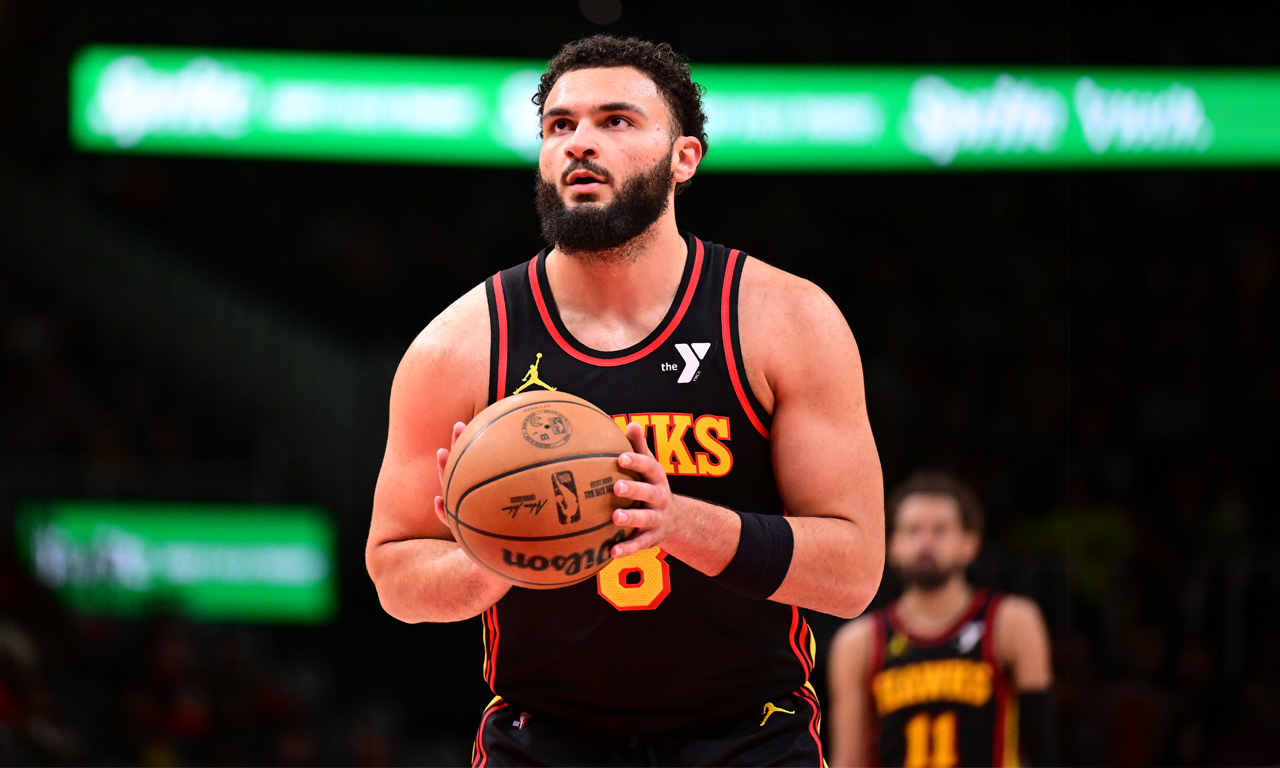
The Rockets made a move on Monday, signing former first-round pick David Roddy to a two-way contract.
The two-way spot opened up after the front office signed Jeenathan Williams to a standard four-year, $8.2 million contract (with friendly team options all along the way).
Roddy is 6-foot-5 and 250+ pounds but sports a 6-foot-11 wingspan. He was taken with the 23rd pick in the first round of the 2022 NBA Draft — six selections after the Rockets drafted Tari Eason. A standout in college, Roddy averaged 19.2 points, 7.5 rebounds, 2.9 assists, 1.2 steals, and 1.1 blocks per game during his junior season at Colorado State.
Roddy, who turns 24 later this month, is a physical player who can play multiple positions. He’s a solid rebounder for his size/position. He has played in 165 games over three seasons with the Grizzlies, Suns, Hawks and most recently Sixers, averaging 6.2 points and 2.9 rebounds per game.
The guard/forward has not shown efficient shooting, however — he’s a career 30.5% three-point shooter and just 68.4% from the line. His defense is better inside than out.
Ultimately, it will be those two things — three-point shooting and defense — that will determine his chances of carving out a consistent role in the league.
All in all, it’s a low-risk signing and the Rockets get a look at a prospect that fits their age timeline.
Houston Rockets
Houston a potential landing spot for Ben Simmons post-buyout?
Published
3 months agoon
February 6, 2025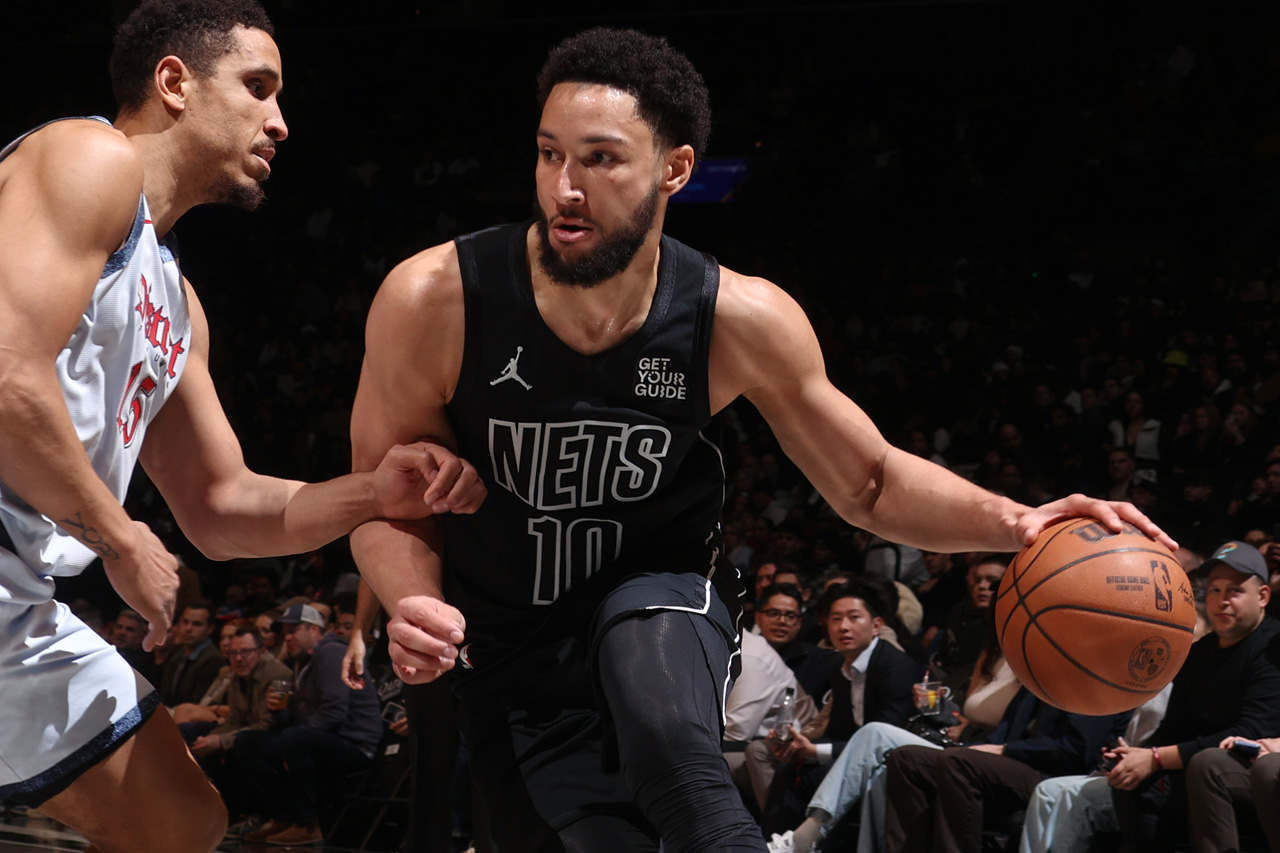
ESPN NBA analyst Brian Windhorst said on Thursday’s NBA Trade Deadline show that Brooklyn Nets forward Ben Simmons is working on a buyout and the Houston Rockets is a potential landing spot for him.
“Cleveland and Houston are two situations for Ben Simmons,” said Windhorst.
Brian Windhorst says the Cavaliers and Rockets are buyout locations for Ben Simmons.
Thoughts? pic.twitter.com/7ly4mvmxr5
— ClutchFans (@clutchfans) February 6, 2025
Advertisement
Rockets coach Ime Udoka was an assistant coach in Philadelphia in 2019-20 when Simmons was with the Sixers, before injuries took a significant toll. In fact, Udoka, when speaking about Amen Thompson earlier this season, brought up some comparisons to Simmons.
“The skill set is there, and it’s something that’s unique with his speed, athleticism, size, passing ability, and all those things,” said Udoka of Thompson. “I coached somebody, Ben Simmons, who had similar traits… as far as size and ability to push the pace, and find guys and finish. There are some similarities there.”
Both Thompson and Simmons are known for their elite athleticism, defensive versatility, and ability to create opportunities in transition.
However, can Simmons help the Rockets today? That’s the tough question.
Simmons has played in 33 games this season, averaging 6.2 points, 6.9 assists, 5.2 rebounds, 0.8 steals and 0.5 blocks in 25 minutes a night. He does not shoot threes (like, at all) — he has only attempted two threes in the past three seasons combined.
Ideally, he does not play in front of your young forwards of Amen, Tari Eason and Jabari Smith Jr. and on that basis alone, I think I would pass. But, Ime loves defensive dogs and he could use some extra ballhandling on the roster. You can see that there’s little in the way of offensive organization when Fred VanVleet is out.
There would be a comical full circle moment though if the Rockets did sign Ben Simmons, considering the Rockets were heavily criticized for trading James Harden in 2021 to Brooklyn instead of to Philadelphia for Simmons. The Rockets clearly made the right choice there.

